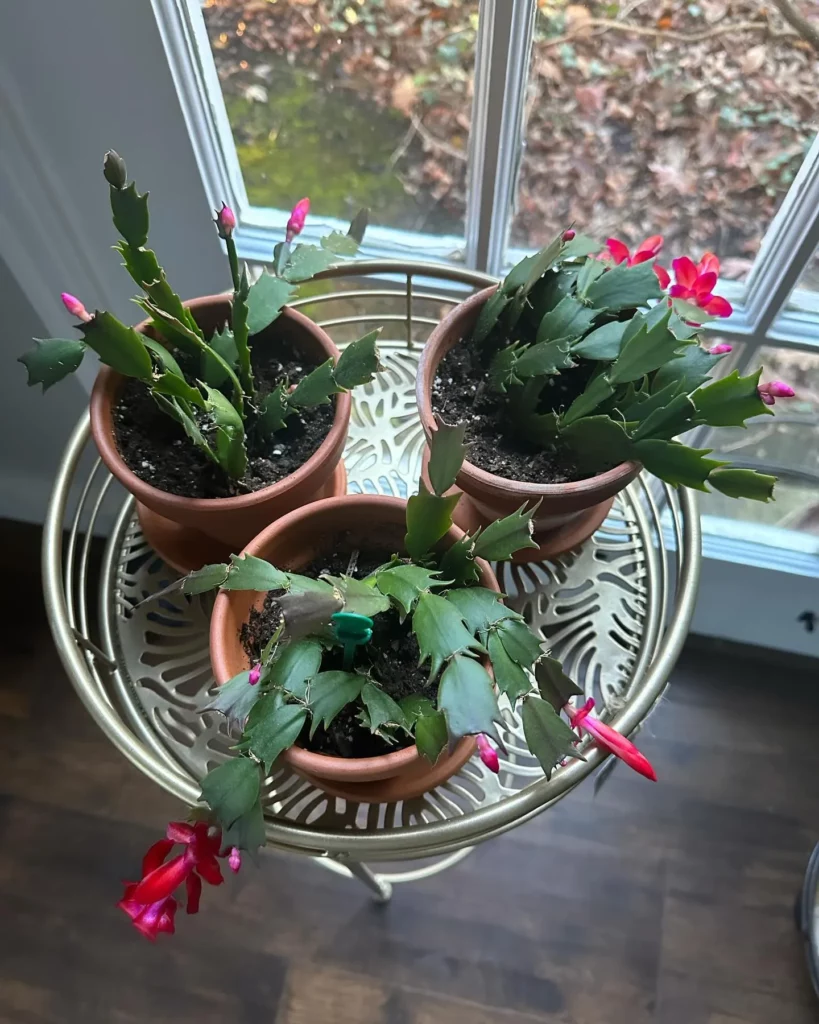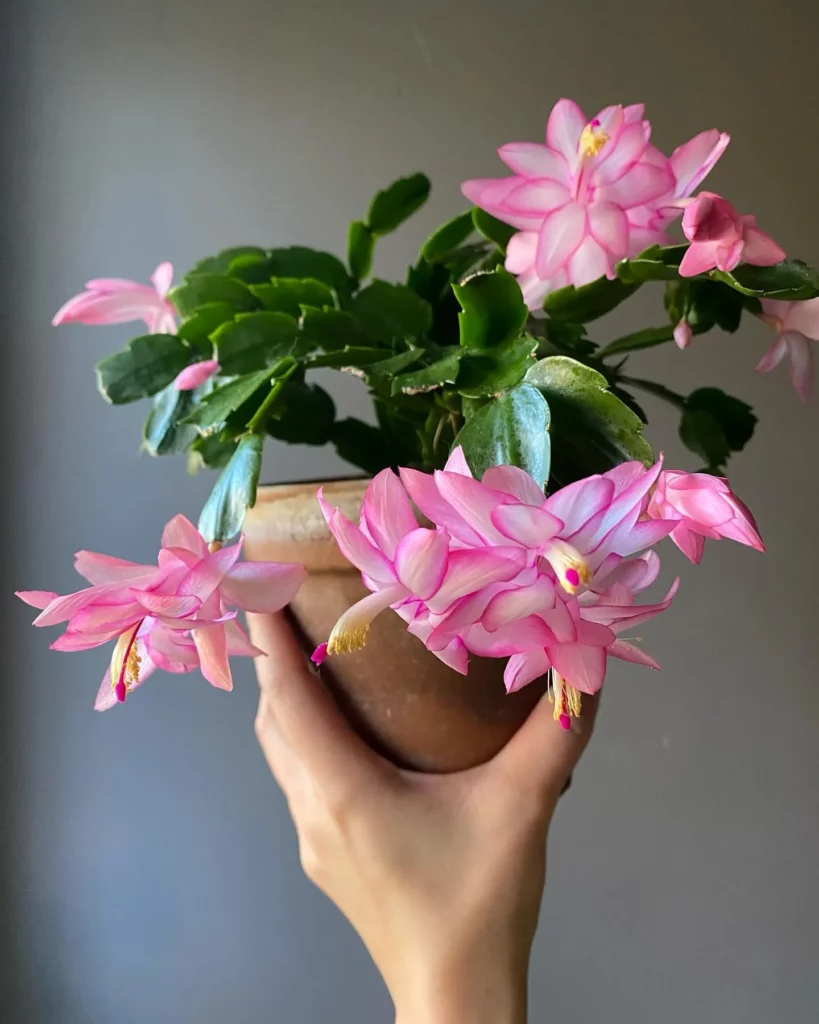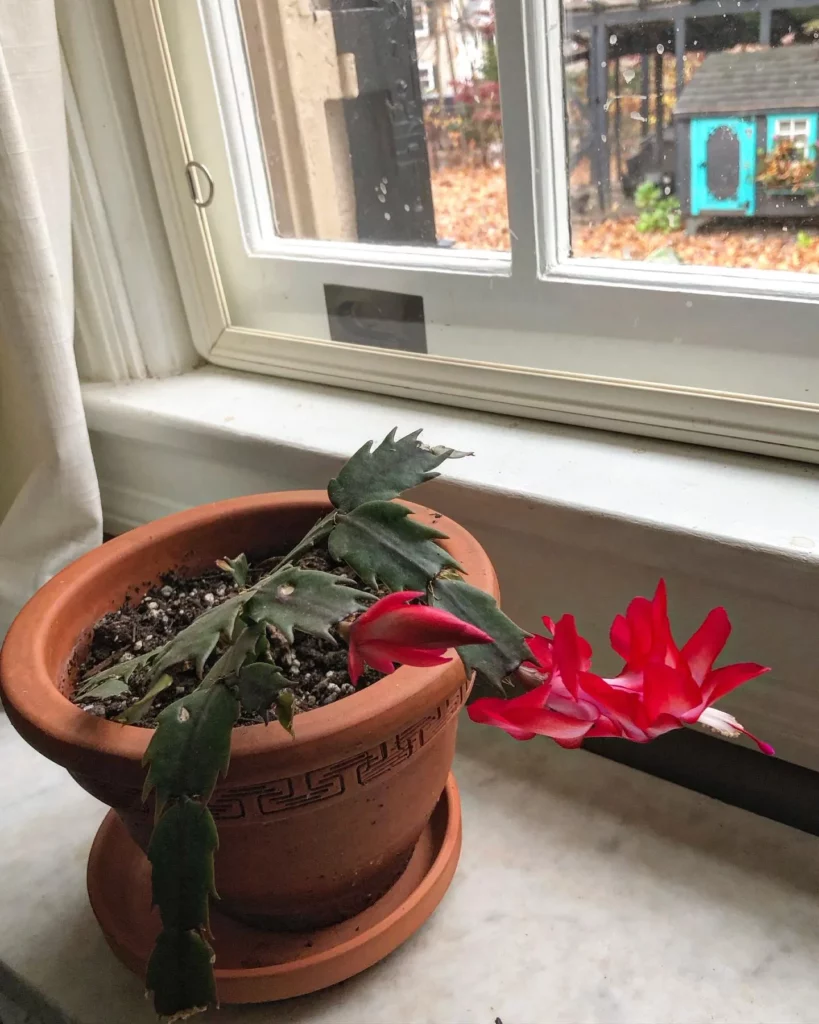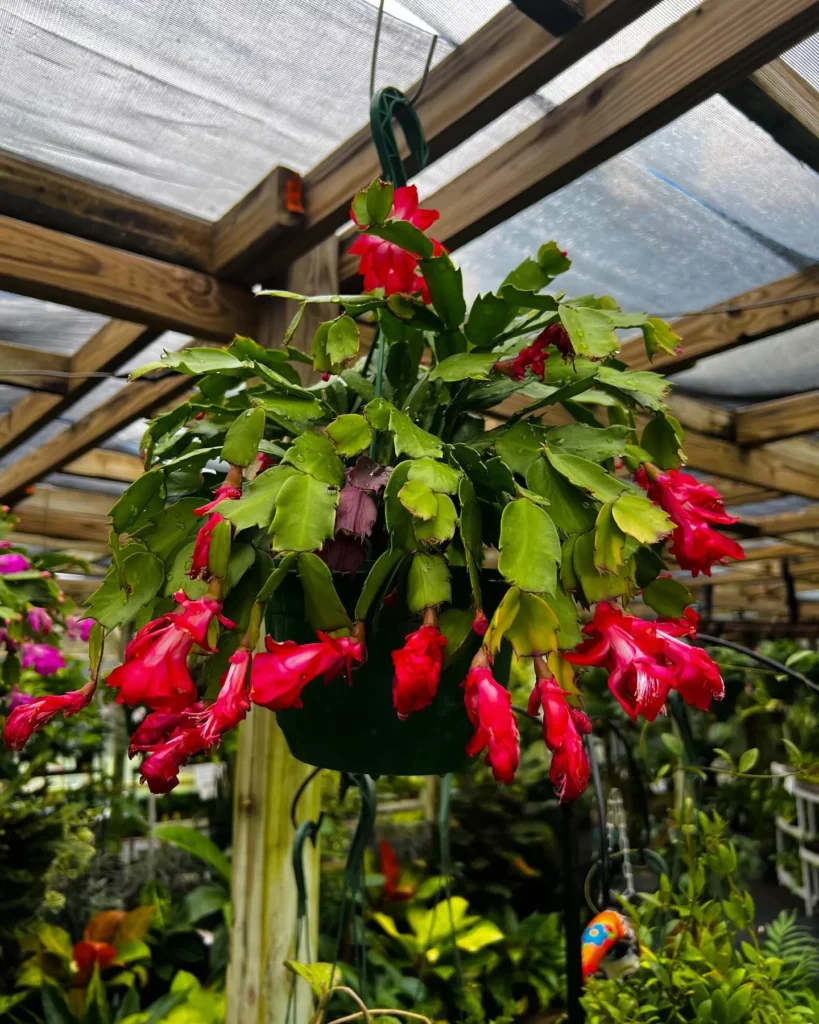Welcome to our essential buying guide for a healthy and vibrant Christmas cactus, the perfect addition to your holiday decor. Before bringing home this festive plant, there are a few key factors you should consider.
By checking these five essential tips before making your purchase, you can ensure that you bring home a Christmas cactus that will thrive and bring joy throughout the holiday season.
Determine the Health of the Plant

Assessing the overall health of the Christmas cactus is crucial before bringing it home. By checking for signs of a healthy plant, you can ensure that you are purchasing a high-quality Christmas cactus that will thrive in your care.
Signs of a Healthy Plant
- Vibrant Leaves: Look for leaves that are green and lush, without discoloration or yellowing.
- Balance Growth: A healthy Christmas cactus should have symmetrical and even growth, with no wilting or drooping branches.
- Pest-free: Inspect the plant carefully and make sure it is free from any signs of pests or diseases.
Check for Proper Drainage

Adequate drainage is crucial for the health and well-being of your Christmas cactus. Without proper drainage, excess water can accumulate in the pot, leading to waterlogging and root rot.
To ensure the longevity of your beloved holiday plant, it’s essential to check for proper drainage when purchasing a Christmas cactus.
Why is well-draining soil important?
Well-draining soil allows excess water to escape freely, preventing water retention around the plant’s roots. This is essential because Christmas cacti are native to the rainforests of Brazil, where they grow in the crevices of trees rather than in the ground.
By imitating their natural environment with well-draining soil, you can recreate the ideal growing conditions for your Christmas cactus.
How to check for drainage holes?
When selecting a pot for your Christmas cactus, make sure it has proper drainage holes at the bottom. These holes allow excess water to escape, ensuring that the roots don’t become waterlogged.
Before purchasing a Christmas cactus, inspect the pot to ensure it has adequate drainage holes or be prepared to repot it into a suitable container.
Inspect the Root System

The root system of a Christmas cactus is crucial for its overall health and vitality. By examining the roots, you can determine the plant’s root health, check for signs of being root-bound, and ensure that the roots are in a healthy and undamaged state.
To inspect the root system of a Christmas cactus:
- Gently remove the plant from its pot, being careful not to damage the roots.
- Examine the roots for any signs of damage, such as discoloration, mushiness, or rot. Healthy roots should be firm, white, and plump.
- Check if the roots are circling around the pot, which indicates root-boundness. If the roots are tightly wound and form a solid mass, the plant may require repotting to allow for proper root growth.
Evaluate the Lighting Requirements

Proper lighting conditions are crucial for the health and vitality of your Christmas cactus. Understanding the lighting requirements of this festive plant is essential to ensure its optimal growth and blooming potential.
Optimal Light Exposure
The Christmas cactus thrives in indirect sunlight, making it ideal for indoor settings. It requires bright, but not harsh, light to flourish.
Placing your Christmas cactus near a north or east-facing window is often the best choice, as these directions provide gentle, indirect sunlight that promotes healthy growth.
Low-light conditions can also be suitable for the Christmas cactus, making it a versatile plant for various areas in your home. However, be cautious of exposing the plant to too much direct sunlight, as it can lead to leaf burns and damage.
Determining Suitable Lighting Conditions
When purchasing a Christmas cactus, it’s important to evaluate its previous light exposure. A cactus that has been grown in low-light conditions may require a gradual transition to brighter surroundings, while a plant accustomed to brighter light may not thrive in dimly lit areas.
Take a close look at the plant’s overall condition and foliage. If the leaves are pale or yellowish, it may indicate insufficient light exposure, while dark, reddish leaves could suggest excessive exposure to direct sunlight.
A healthy Christmas cactus should have green, glossy leaves that appear vibrant and well-nourished.
Ensure you select a Christmas cactus that has been grown in suitable light conditions to set the stage for its long-term health and blooming success.
Check for Flower Buds

One of the key factors in determining the health of a Christmas cactus is to check for flower buds. Flower buds indicate the plant’s blooming potential and are a sign of a healthy cactus that is likely to produce beautiful blooms during the holiday season.
To check for flower buds, examine the tips of the cactus’ stems. During its dormant phase, the Christmas cactus will develop small, round, and slightly pointed buds.
These buds are often hidden among the leaves, so make sure to inspect the plant carefully.
If you spot flower buds, it’s a promising sign that the cactus is well-cared for and has a strong blooming potential. These buds will eventually develop into colorful and vibrant flowers that will enhance the festive atmosphere in your home.
Verify the Age of the Plant

The age of the Christmas cactus can significantly impact its ability to produce blooms. Understanding the plant’s maturity and choosing established plants can increase your chances of enjoying a fully blooming Christmas cactus.
A young Christmas cactus may not have reached its blooming age yet, so it’s important to assess the plant’s maturity before making a purchase.
Determining plant maturity:
- Look for well-developed stems and branches.
- Check if there are signs of previous blooms to indicate the plant’s past blooming cycles.
- Inspect the size and fullness of the plant, as mature plants tend to be larger and more established.
- Consider purchasing plants labeled as “mature” or “established” by the seller.
Benefits of established plants:
- Increased blooming potential: Established plants have had more time to develop fully and are more likely to bloom.
- Quicker enjoyment: Instead of waiting for a young plant to mature, an established plant may already be in its blooming phase.
- Proven resilience: Established plants demonstrate their ability to survive and thrive, offering assurance of a plant with strong vitality.
Age Considerations for Christmas Cactus
| Age | Blooming Potential | Plant Characteristics |
|---|---|---|
| Young (2-3 years) | May not have reached blooming age | Smaller size, less established |
| Mature (4-5 years) | Increased blooming potential | Larger size, more established |
| Established (6+ years) | High blooming potential | Signs of previous blooms, fullness |
Consider the Maintenance Requirements

Proper maintenance is key to ensuring the health and longevity of your Christmas cactus. By understanding the care instructions, watering needs, temperature requirements, and overall maintenance level of the plant, you can provide it with the best possible care.
Care Instructions
The Christmas cactus is a relatively low-maintenance plant, making it suitable for both experienced and novice gardeners. To keep your plant thriving, here are some care tips to follow:
- Place the Christmas cactus in a location with bright, indirect sunlight. Avoid exposing it to direct sunlight, as it can scorch the leaves.
- Maintain a consistent temperature between 65-75°F (18-24°C) during the day and slightly cooler temperatures at night.
- Water the plant when the top inch of the soil feels dry. Overwatering can lead to root rot, so it’s important to let the soil dry out slightly between waterings.
- Fertilize the Christmas cactus every 2-4 weeks during the growing season (spring and summer) with a balanced houseplant fertilizer.
Watering Needs
The Christmas cactus has specific watering needs that differ from other houseplants. Here’s how to water your plant effectively:
- Avoid overwatering the Christmas cactus, as it is susceptible to root rot. Only water when the top inch of the soil feels dry to the touch.
- Water the plant thoroughly until the water drains out of the bottom of the pot, but ensure that the pot has proper drainage holes to prevent water from pooling.
- During the winter months, when the Christmas cactus enters its dormant phase, reduce watering and allow the soil to dry out more between waterings.
Temperature Requirements
The Christmas cactus thrives in moderate temperatures with a slight drop at night. Here are the ideal temperature ranges for this plant:
- Maintain a daytime temperature between 65-75°F (18-24°C) to promote healthy growth and blooming.
- During the night, slightly lower the temperature to around 55-65°F (13-18°C) to mimic its natural habitat and encourage bud formation.
Maintenance Level
The Christmas cactus is generally considered a low-maintenance plant. With proper care and attention, it can thrive without much effort. Regularly check the plant for signs of pests or diseases, and prune any dead or damaged stems to promote new growth.
Research the Species or Varieties

When it comes to choosing a Christmas cactus, there are several species and varieties to consider. Each species has its own unique characteristics and bloom patterns, allowing you to find the perfect fit for your preferences and requirements.
Two popular species of Christmas cacti are the Schlumbergera truncata and Schlumbergera bridgesii.
The Schlumbergera truncata, also known as the Thanksgiving cactus, features pointed and slightly scalloped leaves. This species typically blooms in late fall or early winter, producing vibrant and eye-catching flowers. The blooms of the Schlumbergera truncata tend to have a flat and open appearance.
The Schlumbergera bridgesii, commonly known as the Christmas cactus, has rounded leaves with saw-toothed edges. This species typically blooms in late winter, creating a stunning display of colorful flowers.
The blooms of the Schlumbergera bridgesii have a more tubular shape compared to the Schlumbergera truncata.
Additionally, there are various holiday cactus varieties available that offer even more options in terms of flower color and plant characteristics. Some popular holiday cactus varieties include:
- Red Flame: This variety features deep red flowers that add a vibrant touch to your holiday decor.
- Pink Pearl: With its delicate pink blooms, the Pink Pearl variety brings a soft and feminine charm to any space.
- White Christmas: If you prefer a classic and elegant look, the White Christmas variety is a perfect choice with its pure white flowers.
- Golden Sunburst: This variety offers unique golden-yellow flowers that add a touch of warmth and cheer.
Consider the Reputation of the Seller

When purchasing a Christmas cactus, it’s important to choose a reputable seller who offers quality plants. Buying from trusted sources ensures that you receive a healthy and vibrant holiday plant for your home.
Here are a few tips to help you assess the reputation of the seller:
- Research reputable sellers: Look for well-known nurseries, garden centers, or online retailers that specialize in selling plants. These reputable sellers often have established track records and a wide selection of plants to choose from.
- Read customer reviews: Check customer reviews and testimonials for the seller or the specific plant you’re interested in. Genuine customer reviews can provide valuable insights into the quality of plants, customer service, and overall shopping experience.
- Consider recommendations: Ask friends, family, or fellow plant enthusiasts for recommendations on reputable sellers they have had positive experiences with. Getting personal recommendations can give you added confidence in your purchase.
Plan for Transition and Care

Once you’ve brought your new Christmas cactus home, it’s important to provide it with the proper care and acclimation to ensure its long-term health and vitality. Follow these essential tips to minimize stress and help your plant adjust to its new surroundings:
1. Acclimation Period
Give your Christmas cactus an acclimation period of a few days to adjust to the new environment. During this time, place the plant in a location with indirect sunlight and stable temperatures. Avoid exposing it to extreme temperature changes or drafts.
2. Gradual Environment Change
To prevent transition shock, gradually introduce your Christmas cactus to different lighting conditions. Start by placing it in a relatively low-light area and gradually move it to a brighter location over a few weeks. This will help the plant adapt to different light levels without stress.
3. Post-Purchase Care
Take extra care with watering during the acclimation period. Keep the soil slightly moist, but avoid overwatering, as excessive moisture can lead to root rot.
Monitor the humidity levels in your home, as dry air can affect the plant’s health. Mist the leaves occasionally or use a humidifier to create a suitable environment.
4. Provide Proper Lighting
Ensure your Christmas cactus receives adequate lighting, as it influences its growth and blooming. Place the plant in a bright location with indirect sunlight for about 12-14 hours a day. Avoid placing it in direct sunlight, as this can cause leaf burns.
5. Maintain Consistent Care
Consistency is key when it comes to caring for your Christmas cactus. Stick to a regular watering schedule, allowing the top inch of the soil to dry out before watering again. Provide a well-balanced fertilizer every two to four weeks during the growing season to promote healthy growth.
Enjoy Your Vibrant Christmas Cactus

Congratulations on applying these essential tips before buying your Christmas cactus! Now that you have brought home a healthy and vibrant holiday plant, it’s time to enjoy its beauty and make it a centerpiece of your festive décor.
Place your Christmas cactus in a prominent location where it can be admired by both your family and guests. Its lush foliage and unique, colorful blooms will add a cheerful touch to your home during the Christmas season.
To create an eye-catching display, consider pairing your Christmas cactus with other complementary decorations, such as fairy lights, ribbons, or ornaments. You can also place it in a decorative pot or basket to enhance its appeal.
Remember to provide the right care for your Christmas cactus to ensure its continued health and vibrancy.
Find a well-lit spot with indirect sunlight and maintain a consistent temperature. Water the plant regularly, allowing the soil to dry slightly between waterings.
FAQ
Q: What should I check before buying a Christmas cactus?
A: Before buying a Christmas cactus, you should determine the health of the plant, check for proper drainage, inspect the root system, evaluate the lighting requirements, check for flower buds, verify the age of the plant, consider the maintenance requirements, research the species or varieties, and consider the reputation of the seller.
Q: How can I determine the health of the plant?
A: You can determine the health of the plant by looking for signs of a healthy plant, such as vibrant leaves, balanced growth, and the absence of pests or diseases.
Q: Why is proper drainage important for a Christmas cactus?
A: Proper drainage is important for a Christmas cactus because it helps prevent waterlogging and root rot. You should check if the pot has proper drainage holes and use well-draining soil.
Q: How do I inspect the root system of a Christmas cactus?
A: To inspect the root system of a Christmas cactus, gently remove the plant from its pot and check for signs of root-bound plants or any signs of unhealthy or damaged roots.
Q: What are the lighting requirements for a Christmas cactus?
A: A Christmas cactus requires indirect sunlight and thrives in bright but indirect light. You should ensure that the plant has been grown in suitable lighting conditions.
Q: How can I check for flower buds on a Christmas cactus?
A: To check for flower buds on a Christmas cactus, examine the stem segments for small, rounded projections. Flower buds indicate a healthy plant with the potential to produce beautiful blooms during the holiday season.
Q: Does the age of the Christmas cactus matter?
A: The age of the Christmas cactus can impact its ability to produce blooms. Younger plants may take longer to reach the blooming age, while established plants are more likely to produce blooms.
Q: What are the maintenance requirements for a Christmas cactus?
A: The maintenance requirements for a Christmas cactus include proper watering, temperature conditions, and care instructions. You should assess if the plant’s maintenance level aligns with your capabilities and preferences.
Q: What are the different species or varieties of Christmas cactus?
A: There are different species and varieties of Christmas cactus, the most popular being Schlumbergera truncata and Schlumbergera bridgesii. Researching the different species can help you choose the one that suits your preferences and requirements.
Q: How important is the reputation of the seller when buying a Christmas cactus?
A: It is important to buy a Christmas cactus from reputable sellers or trusted sources. You can assess the seller’s reputation through customer reviews and recommendations to ensure that you are purchasing quality plants.
Q: How can I minimize stress during the transition of a Christmas cactus?
A: During the transition of a Christmas cactus, you can minimize stress by allowing for an acclimation period, gradually changing the environment, and providing proper post-purchase care. These steps will help the plant adjust to its new surroundings and maintain its health and vitality.
Q: How can I enjoy my Christmas cactus as a festive décor?
A: Once you have purchased a healthy Christmas cactus, you can enjoy it as a vibrant holiday plant and use it as a festive décor in your home during the Christmas season. Its beautiful blooms will provide a cheerful touch to your surroundings.





